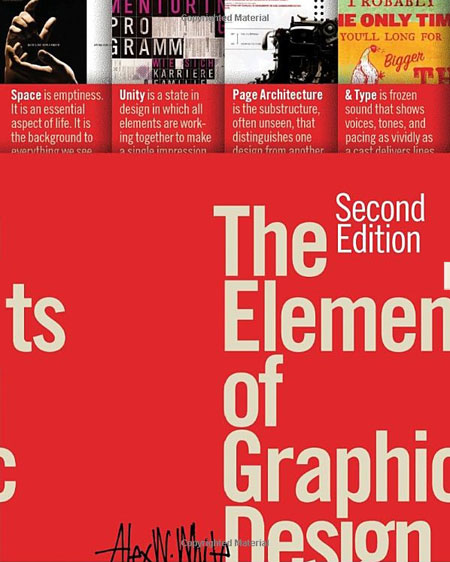
In graphic design, there is no such thing as “wasted space,” only poorly used “white space,” according to Alex W. White, author of The Elements of Graphic Design, Second Edition. To White—a Parsons professor, author, and twenty-eight-year design veteran—ignoring the importance of dynamic white space is a crucial mistake. White uses the provocative concept of white space as an active participant in design as a guiding principle in the full-color, visually sumptuous update of his best-selling textbook, The Elements of Graphic Design.
This new edition—expanded in trim size by fifty percent and in full color for the first time—includes 200 new images, a new section on Web design, and thought-provoking discussions of modularity, framing, motion and time, and rule and randomness. More than 750 illustrations—culled from the canons of design, painting, architecture, and printmaking, as well as from the author’s own files—make even the most abstract concepts easily comprehensible.
The second edition of The Elements of Graphic Design provides designers, art directors, and students—regardless of experience—with a unique and sometimes counterintuitive approach to design thinking that treats “white” or “negative” space as a full participant in design. The book is divided into four sections based on the four elements of graphic design—space, unity, page architecture, and type—and explores how they influence a design’s ability to communicate with and captivate the reader. Six visually arresting, detailed timelines on “the historical development of space,” including logos, posters, magazines, and typefaces, illustrate how designers from 4000 BC to the present day evolved in their design thinking. This comprehensive introduction to graphic design concepts includes a glossary of design terms and a two-page designer’s checklist.

